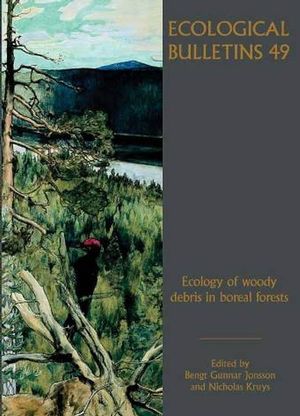Ecological Bulletins, Bulletin 49, Ecology of Woody Debris in Boreal ForestsISBN: 978-87-16-16432-2
Hardcover
280 pages
December 2001, Wiley-Blackwell
 |
||||||
Today dead trees are not only viewed upon as waste and as potential
sources of pest species. Instead they have gained an increased
attention as key factors for biodiversity in many ecosystems. This
change in focus and concern has sparked intense research activities
directed to explore the ecological role of dead trees in forest
ecosystems. Focus is directed into three main areas: 1) to
understand the
patterns of woody debris availability in relation to forest stand dynamics and effects of forestry, 2) the role of woody debris in nutrient and particularly carbon dynamics in forest ecosystems, and 3) the pattern and biology of the utilization of woody debris for a large number of wood-dependent species. This volume summarises the present knowledge and presents a set of case studies on the role of dead wood in boreal forests. The focus is on Fennoscandian boreal forests.
patterns of woody debris availability in relation to forest stand dynamics and effects of forestry, 2) the role of woody debris in nutrient and particularly carbon dynamics in forest ecosystems, and 3) the pattern and biology of the utilization of woody debris for a large number of wood-dependent species. This volume summarises the present knowledge and presents a set of case studies on the role of dead wood in boreal forests. The focus is on Fennoscandian boreal forests.
However, the results presented have a wide applicability and thus the volume may serve as a general introduction to the importance of woody debris in forest ecosystems.



